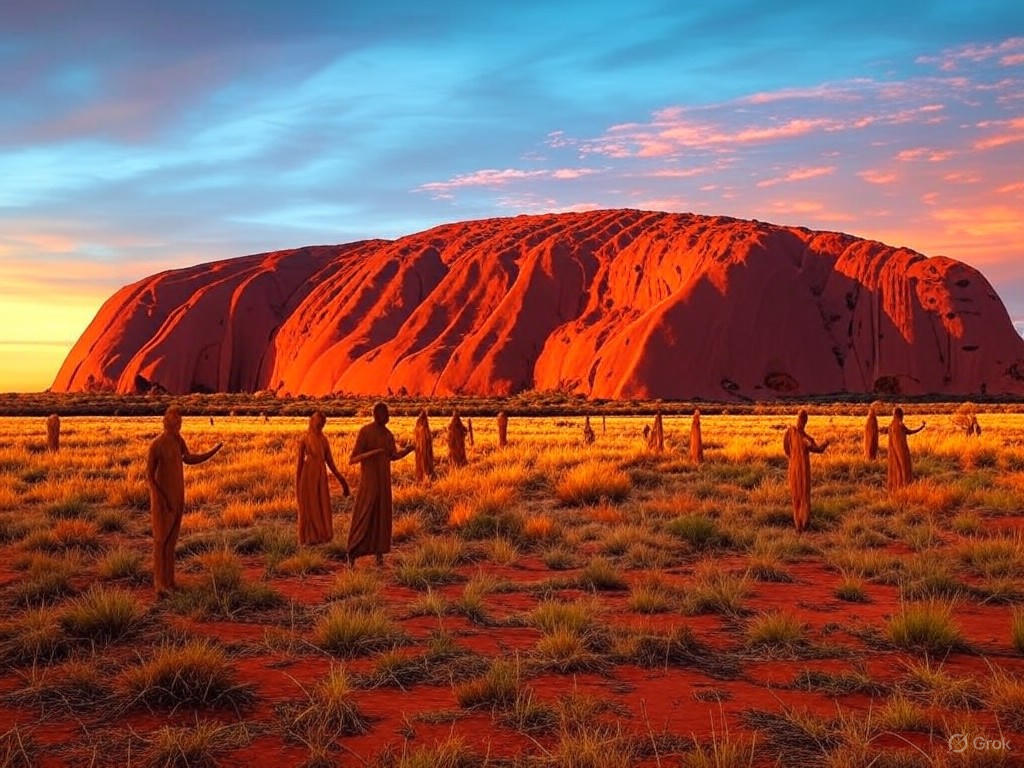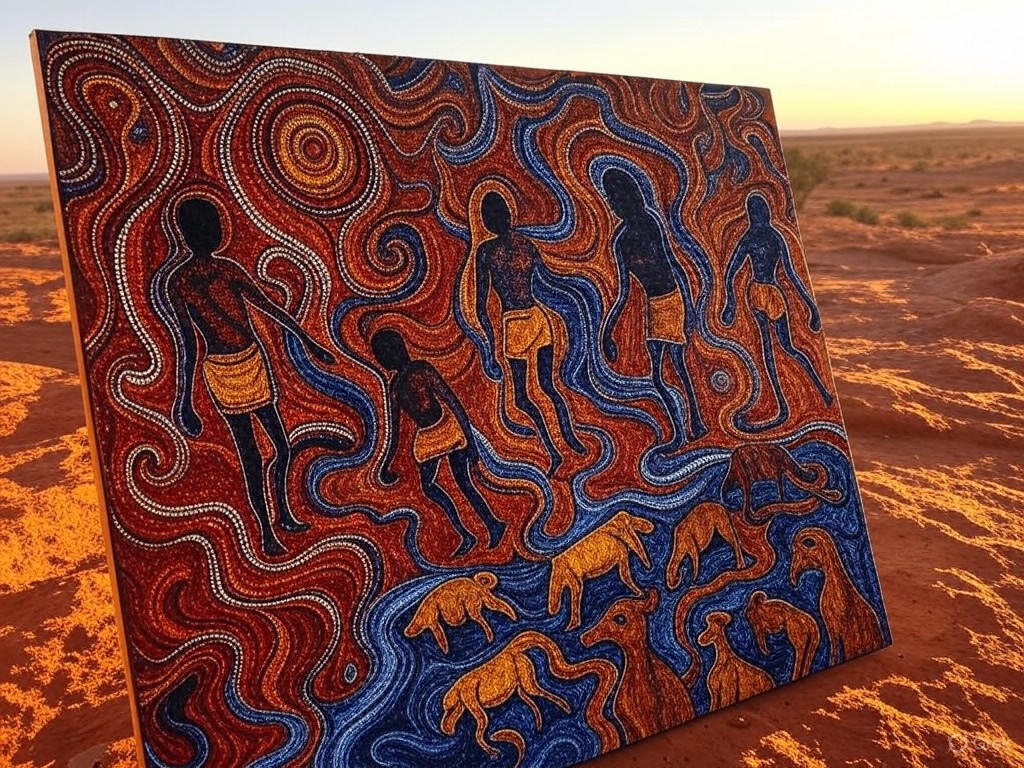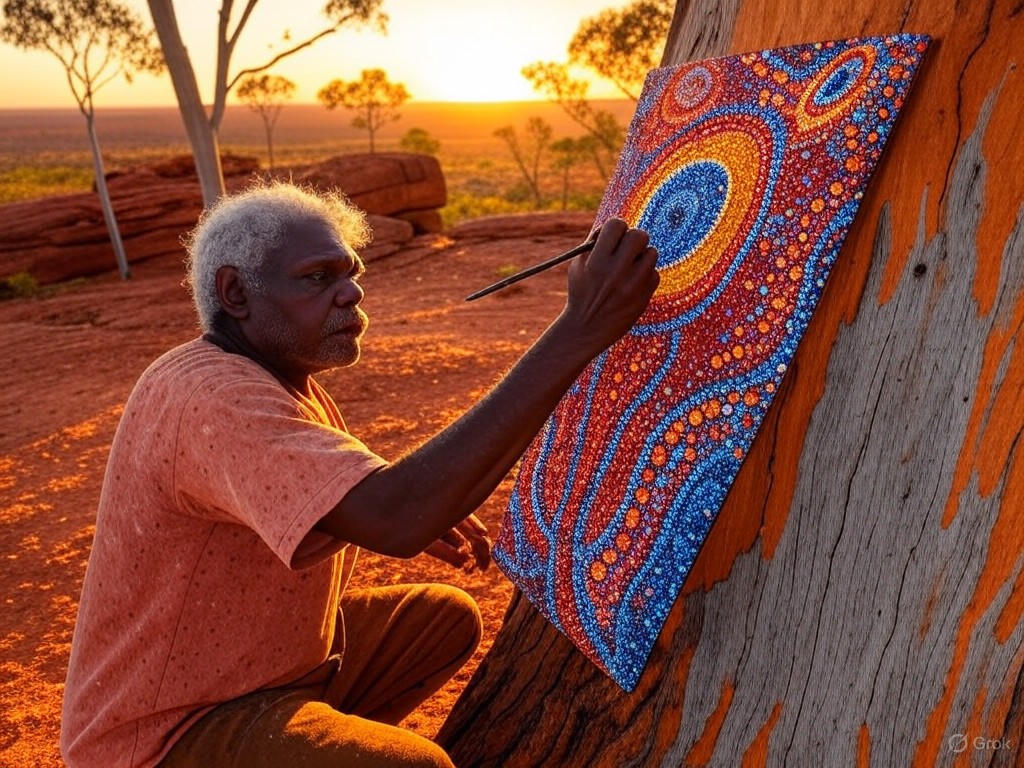Aboriginal Dreamtime Art: Stories in Color
In the vast, sun-baked expanses of Australia, where ancient landscapes whisper tales of time immemorial, the vibrant strokes of Aboriginal Dreamtime art stand as a testament to human creativity and resilience. This indigenous form of expression, rooted in the spiritual and narrative traditions of the Aboriginal peoples, weaves stories of creation, survival, and wisdom into mesmerizing visuals. As we navigate an era of rapid change, these artworks remind us of the enduring value of cultural heritage—not as relics of the past, but as living threads that connect generations. In this editorial, we explore the legacy of Aboriginal Dreamtime art, emphasizing its role in fostering community-driven preservation, economic opportunity, and traditional values, all while advocating for a balanced approach that respects free-market principles and limited government involvement.
Dreamtime art, often depicted through dot paintings, bark art, and rock engravings, serves as a vivid chronicle of the Aboriginal worldview. Far from mere decoration, these works encapsulate the Dreamtime—a concept central to Aboriginal culture that describes the beginning of the world and the interconnectedness of all life. This art form has persisted for tens of thousands of years, predating modern institutions and offering a model of self-sustaining cultural expression. From a center-right perspective, it exemplifies how traditional values can thrive without heavy-handed intervention, relying instead on individual initiative and community networks to maintain their integrity.
The Narrative Power of Dreamtime Visuals
Aboriginal Dreamtime art is more than aesthetic; it is a storytelling medium that conveys profound truths through symbols and patterns. Artists use earthy pigments and intricate designs to depict ancestral stories, such as the journeys of spirit beings that shaped the land. This method not only preserves oral histories but also adapts them to contemporary contexts, allowing for economic sustainability through art sales and tourism.
Consider the works of renowned artists like those from the Central Desert region, where paintings often illustrate the creation stories of Uluru, a sacred monolith. These pieces highlight a cultural heritage that has evolved organically, much like free-market innovations that reward creativity without bureaucratic oversight. According to The Australian, Aboriginal art has become a significant export, generating millions in revenue through galleries and online platforms, demonstrating how market forces can uplift communities while honoring traditions.
Yet, the global appreciation of this art raises questions about authenticity and commercialization. A balanced view acknowledges the benefits of open markets, where artists can freely sell their work, while cautioning against overregulation that might stifle innovation. This approach aligns with traditional values of self-reliance, echoing the pioneering spirit that built nations like Australia through individual effort rather than top-down mandates.

This painting captures the mythical formation of Uluru, illustrating how Aboriginal artists use color and form to narrate ancient legends, bridging past and present.
Analyzing the Cultural and Economic Impact
The analysis of Aboriginal Dreamtime art reveals its multifaceted role in modern society. Culturally, it fosters a sense of identity and continuity, particularly in remote Australian communities where it serves as an educational tool. Art centers, often run by indigenous cooperatives, teach younger generations the techniques and stories, ensuring that heritage is passed down without reliance on government programs. This grassroots model underscores the efficacy of limited intervention, allowing communities to manage their cultural assets independently.
Economically, Dreamtime art contributes to Australia's creative industries, which, as reported by BBC News, have seen growth through international exhibitions and sales. In 2022, for instance, Aboriginal artworks fetched record prices at auctions, empowering artists to achieve financial independence. This success story highlights free-market dynamics: when individuals are free to innovate and trade, cultural preservation becomes a viable enterprise, rather than a subsidized obligation.
However, challenges persist, such as the need for intellectual property protection to prevent cultural appropriation. A center-right stance would advocate for streamlined, market-friendly policies—perhaps through voluntary certification programs—rather than expansive regulations. As noted in a study by the National Museum of Australia, such measures can enhance authenticity without imposing burdensome controls, allowing the art market to self-regulate based on consumer demand and ethical standards.
In this context, Dreamtime art exemplifies how cultural heritage can drive social trends toward greater appreciation of tradition. Unlike fleeting modern fads, these visuals offer timeless lessons on stewardship and community, promoting values that have sustained societies long before centralized authorities.

This dot painting portrays ancestral spirits in the Dreamtime, showcasing the meticulous detail that Aboriginal artists employ to convey stories of origin and belonging.
Evidence of Endurance and Forward-Looking Preservation
Evidence from historical and contemporary sources underscores the resilience of Aboriginal Dreamtime art. Archaeological findings, such as those in the Kakadu National Park, date back over 40,000 years, illustrating a continuity that predates colonial influences (Australian Institute of Aboriginal and Torres Strait Islander Studies). These artifacts not only survived environmental challenges but also adapted to new mediums, from traditional ochre on bark to contemporary canvases, thanks to the ingenuity of Aboriginal communities.
In recent decades, the art has gained international recognition, with exhibitions in major cities like New York and London. A 2023 report from Artnet News highlights how this exposure has boosted sales, with Aboriginal artists earning substantial incomes through private galleries rather than public funding. This market-driven growth reflects a center-right ideal: cultural vitality flourishes when individuals are empowered to trade freely, fostering economic mobility without taxpayer burdens.
Moreover, Dreamtime art's role in education and tourism provides tangible benefits. Schools in Australia increasingly incorporate these visuals into curricula, not as mandates from above, but as voluntary enrichments that instill respect for heritage. Tourism operators, leveraging free-market principles, offer guided tours to rock art sites, generating revenue that supports local economies. This model avoids the pitfalls of overregulation, ensuring that cultural sites remain accessible while respecting traditional custodianship.
Yet, as we weigh this evidence, it's clear that the true strength of Aboriginal culture lies in its adaptability. By prioritizing community-led initiatives over expansive government programs, we can safeguard this heritage for future generations, allowing it to evolve in harmony with global markets.
A Vision for the Future
In conclusion, the enduring legacy of Aboriginal Dreamtime art stands as a powerful reminder of humanity's capacity for storytelling and preservation. Through its vibrant visuals, it conveys not only the myths of the past but also the potential for a prosperous future built on traditional values, individual enterprise, and minimal interference. As Australia and the world face cultural shifts, embracing free-market solutions—such as artist collectives and private sponsorships—can ensure that this art continues to thrive.
Looking ahead, we envision a landscape where Aboriginal communities lead the charge in cultural stewardship, drawing on their rich heritage to inspire innovation. By fostering an environment of self-reliance, we honor the spirit of those who have kept these stories alive for millennia. Ultimately, Dreamtime art teaches us that true progress comes not from imposed agendas, but from the timeless wisdom embedded in our shared human narrative.

